Recap: Eat More Fish! Sust. Seafood Convo w Whole Foods
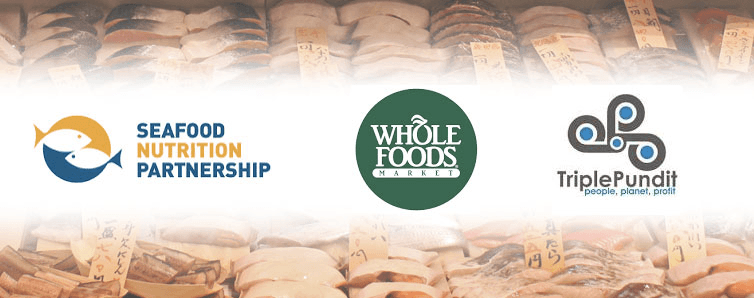

On Friday, we chatted with sustainable seafood pioneers, grocer Whole Foods and nonprofit Seafood Nutrition Partnership, about how to help everyone eat more, better, healthier fish.
Seafood is one of the healthiest, most versatile protein sources. In the U.S., it's also one of the least consumed of the popular animal proteins, with Americans eating around 15 pounds of seafood per year compared to 60 pounds of chicken. Why aren't we eating more?
Guest speakers
- Linda Cornish is Executive Director for the Seafood Nutrition Partnership, an organization focused on inspiring a healthier America through partnerships that raise awareness about the essential nutritional benefits of eating seafood.
- David Pilat has worked in several stores, four regions, and Whole Foods Market’s own seafood processing facility in Pigeon Cove based in Gloucester, Massachusetts. Now in his second date with WFM, he serves as the Company’s global seafood coordinator.
- Nick Aster is a new media architect and the founder of TriplePundit.com
Seafood Nutrition Partnership reports that consumers find seafood intimidating. Where do you buy it? How do you prepare it? Why does it seem so expensive? We learned the answers to these questions and much more!
Carbon Pricing: Putting a Cost on the Environmental Instigators of Climate Change
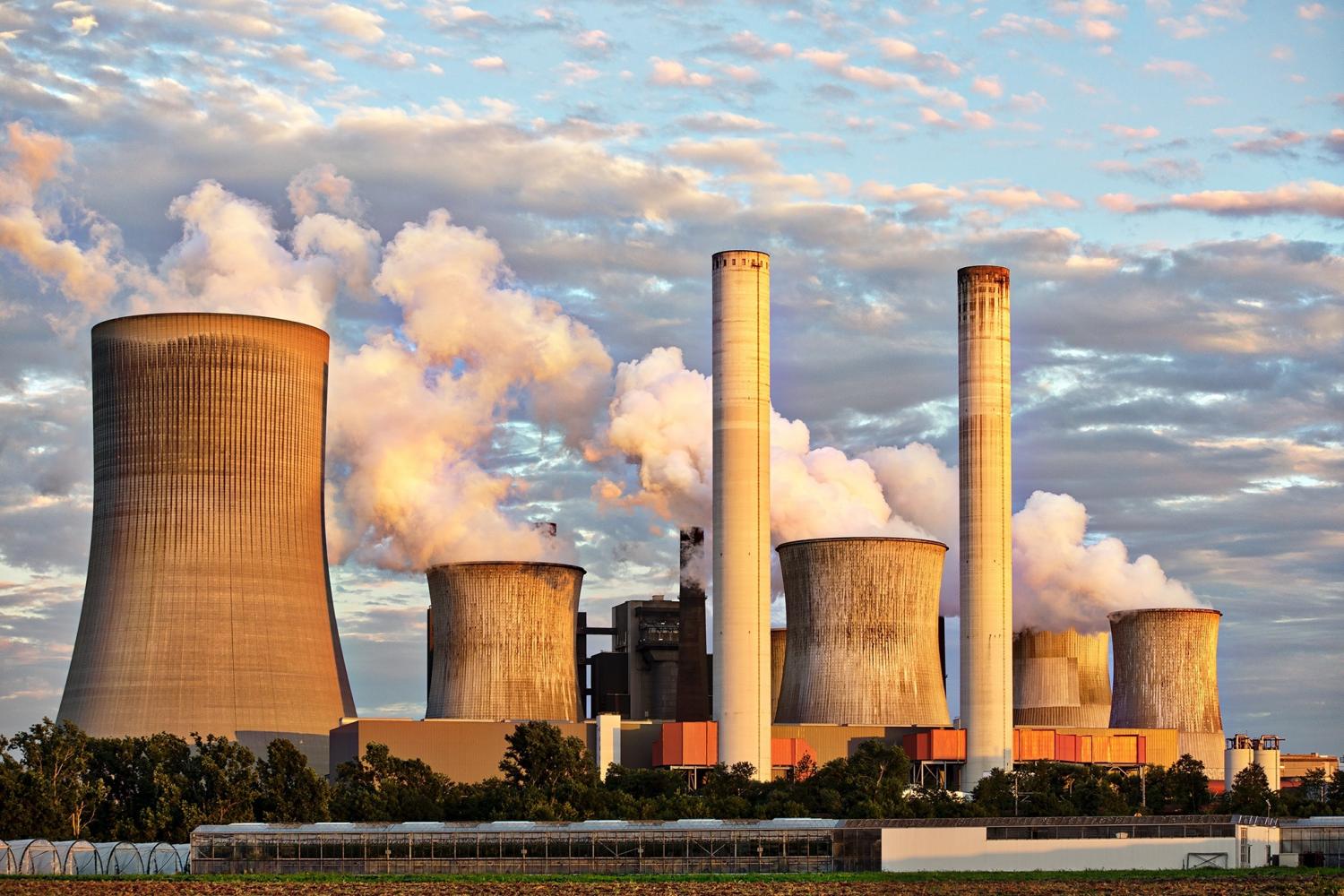
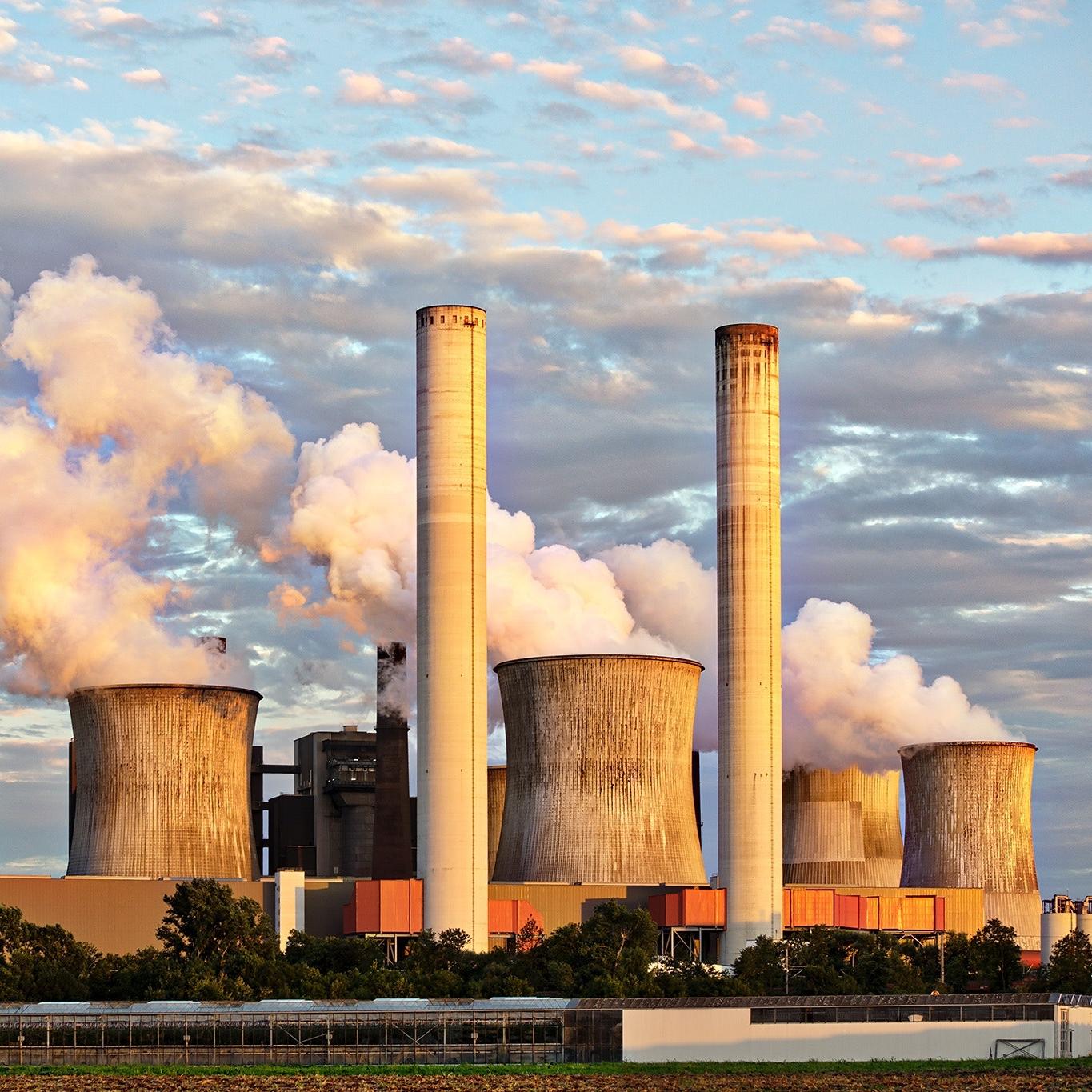
Earlier this year, the World Resources Institute published a handbook for U.S. lawmakers on the benefits and strategies associated with carbon pricing.
It was, at its core, as much an appeal to action as it was a lengthy cheat-sheet on carbon control and reduction in the 21st century. It echoed what former Treasury Secretary Henry Paulson said more than a year earlier: The world is at the brink of action when it comes to climate change. If governments want to ensure that global warming is controlled, then limits must be imposed on carbon emissions. Carbon pricing, said Paulson, is the way to do it.
There was one major difference between WRI's explanation and Paulson's, however. The WRI defined carbon pricing largely as having two distinct models: carbon taxation and cap-and-trade systems, whereas Paulson limited his definition to "placing a tax on carbon dioxide emissions," much like a tax we pay on gasoline or cigarettes, only determined by the carbon generated by large emitters.
As both Paulson and the WRI allude, politics drive the choice between the two more than economic benefits or outcomes.
So, what's the difference between the two systems?
A lot, says EOS Climate CEO Joe Madden. The carbon cap-and-trade system is managed by "policymakers that govern a jurisdiction" who "set a cap on carbon and issue allowances," Madden explained. Since the objective is ultimately to reduce carbon emissions, the program usually implements reductions over time, what Madden called "[ratcheting] down the cap" to create shortages that will ultimately prompt a price signal.
Whether regulated regionally or determined by market demand, the cap-and-trade system serves to a) reduce emissions and b) incentivize investment in low-carbon-emitting alternatives, like technology upgrades that will allow the industry to function more efficiently (less carbon emissions) or convert to alternative forms of energy, like renewable resources.
Carbon taxation on the other hand, Madden told us, involves a fixed assessment: a tax that is usually applied against large emitters, particularly in the fossil fuel industry.
"A carbon tax will raise fossil fuel prices — that’s the point," the Carbon Tax Center notes on its website, arguing that "a briskly rising carbon tax will transform energy investment" and incentivize innovation. Proponents also argue that it allows regulators to reduce taxes in other revenue streams and provide rebates to households -- two benefits that have been particularly popular in the province of British Columbia, Canada.
But to be fair, British Columbia's dependence on hydroelectricity and the Vancouver Mainland's historical outlook toward innovative technologies have helped to pave the way away from high-emitting technologies for years. Vancouver is considered a bedrock when it comes to green technology, construction and planning, and carbon taxation has been only one of many mechanisms that has inspired the province's green revolution.
Carbon cap-and-trade: The regulated approach
While both carbon taxation and cap-and-trade systems offer platforms for innovation, Madden pointed out that the cap system is defined by a variety of diverse approaches. Two principle structures are those regulated by a governing body, such as a state, a province or a federal government, and a privately-monitored model, which lets the market set the confines of the system.
The European Union's cap-and-trade system is considered one of the earliest regulated programs to emerge. As with many new initiatives, it took time before the program settled on what it considered to be the ideal approach to address greenhouse gas emissions. But the program helped create a platform for improvement in later, similar programs as well.
"Effectively what they did is they allowed the capped emitters within the system to report their emissions, and they set the cap based on the collective reporting of the cap emitters," Madden explained. "And then that cap was reduced over time based on the percentage of emission reductions they wanted to achieve.
"But what happened was the initial reporting was inflated. It was overstated." As a result, the starting-point for the cap was too high when European companies began to report, Madden continued. "They issued allowances in accordance with the recorded amount of emissions. So, what you have is what is called an over-allocated market: If you have too many allowances, then the price goes to zero."
Some sources believe this is because the European ETS model did not set a baseline before initiating the program, as California did years later. This resulted in what Madden called "phase 2," in which Europe lowered the number of allowances. "And they have struggled since."
California, however, did its homework, which entailed taking several years of carbon emission recording before launching its program. "So, it gave them the ability to really assess what was going on and to more accurately predict what the starting point for emissions was for that market," Madden said.
He explained that while the government-regulated approach has its benefits, there are some advantages to allowing the markets to set the price of carbon, rather than artificially doing so through regulation.
"[There’s] a radically increasing awareness among the institutional investment community that carbon risk is material within their portfolios, and there aren’t simple mechanisms for them to assess, quantify and price that risk today." Going forward, he said, markets need to price risk themselves -- and they need a mechanism with which to do so. "I don’t think regulated markets are particularly effective or necessarily the best. If we can use our existing capital market infrastructure to price carbon, that would be fantastic."
One of the biggest problems with regulatory systems, Madden contends, is that they are isolated. "The California market and California’s policies are very different than, for example, the Regional Greenhouse Gas Initiative, which is a number of Northeastern states, largely focused on the utility sector, and has different trading rules, different political underpinnings. Linkage between two distinct systems can be difficult."
Linkage facilitates trading opportunities between two distinct programs. "And if you go further, you have a European market [that], again, has all its own particular design elements ... according to what was acceptable within the confines of the political world of the EU."
None of these carbon markets are linked, Madden explained. And linkage can be very difficult when each system has its own political and regulatory design that, by definition, is "generated within whatever the local structure is."
Linkage does occur between regional programs, he said, as has now become the case between California and the Canadian province of Quebec. But they have no control over markets in, say, New York, Boston or Taiwan.
Moreover, there is the tendency to think of carbon programs as they relate to Scope 1 emissions, which are direct GHG emissions, such as the carbon tax structure is designed to address, and Scope 2, those emitted from power generation. But as we now know, carbon emissions aren't limited to oil and gas production and power generation. They occur throughout the supply chain. That is difficult to address with a regional cap-and-trade system.
For example, a company with a deep supply chain, like a fashion or product company, may try very hard to do the right thing for the environment. "[They] may have LED lights and be incredibly adept at managing their corporate footprint in their buildings in San Francisco. However, it is very difficult for them to manage their greenhouse gas emissions across their supply chain, which is much bigger than their corporate footprint," particularly if that supply chain is in Asia, or another region of the country not regulated by that particular cap-and-trade program.
"For Scope 3, which is a significant portion if not most of the multinational organizations, carbon exposure is very difficult under the current approach to cap-and-trade."
For this reason, markets can benefit from cap-and-trade systems that can extend beyond regional boundaries and where carbon pricing is set and adjusted by the market, rather than by regional goals. Today, a number of systems exist in the private sector, and they are helping to drive further innovation.
"It is still an evolving stage, but you can see the elements of it emerging. SASB [Sustainability Accounting Standards Board] has also been evolving to be a more meaningful framework within companies’ overall reporting," Madden said, noting that products like Green Bonds, which help fund projects that are environmentally beneficial and help accentuate the goals of carbon pricing, by posing the question: "How can you put value on the preservation or regeneration of natural capital?"
It's a challenge that carbon pricing, with the ultimate goal to benefit the environment and motivate the reduction of climate change, is designed to address as well.
Toward a comprehensive carbon pricing model
Earlier this month, the Obama administration and leading businesses announced further steps to reduce emissions of hydrofluorocarbons (HFCs) -- a particularly potent greenhouse gases used in refrigeration and air conditioning systems and other applications.
This commitment is yet another step toward realizing the benefit of a market-driven carbon pricing system. It considers GHG emissions for given industries (like heavily-traded commodities timber, soy beans and palm oil) and offers the global community a way to assess and impose a price on an instigator of one of the greatest economic and environmental risks we face today.
Image credit: Pexels
West Elm Shifts Strategy Toward Fair Trade


This is part of a series on "The Future of Fair Trade," written with the support of Fair Trade USA. A 501 (c) (3) nonprofit organization, Fair Trade USA is the leading third-party certifier of Fair Trade products in the United States. To follow along with the rest of the series, click here.
When Jim Brett became the president of West Elm in 2010, the company was closing stores. Launched by Williams-Sonoma in 2002 and based in Brooklyn, West Elm had yet to take off. When Brett looked around at the company's line of home retail products, he was uninspired.
"It was all machine-made, all very clean and simple, and all very soulless," Brett explained. "I wanted to bring personality and soul and handmade into the business."
Over the last five years, West Elm has humanized its products, and its relationships throughout the supply chain -- entering uncharted territory in the process. In partnering with Fair Trade USA, West Elm recently announced its commitment to certify 20 percent of its product assortment by 2017, and 40 percent by 2019. It made this commitment just in time for Fair Trade month.
This will generate $1 million in Fair Trade premiums in four years, empowering factory workers to decide how this money is spent – to improve social, economic or environmental conditions.
Sourcing for impact
West Elm's Impact Sourcing Program began as a collaboration between the company's design team and artisan groups, Jennifer Gootman, director of social consciousness and innovation for West Elm, told TriplePundit in an interview. When Brett joined the brand, he saw the potential to use West Elm’s design process to preserve traditional techniques and employ crafters around the world.
This certainly isn't the soulless business mentality he encountered in 2010. This new approach embraces trust and deeper relationships with vendors, communities and ultimately customers.
"Collaborating with artisan groups gave rise to a new business strategy," Gootman explained. "We were asking: 'How can we use our supply chain and purchasing power to make an impact in the world?'"
Today, West Elm’s Impact Sourcing initiatives have grown to include its commitment to handcraft, sustainability and supply chain transparency, as well as its work with Fair Trade USA.
Ultimately, pursuing Fair Trade certification for vendors involves humanizing the supply chain -- and not just the outward West Elm appearance.
"It takes trust on both sides to build out a business relation in a long-term, strategic way," Gootman told us. "It’s all about relationships and long-term partnerships for us. As we look to consolidate our vendor base, and to mean more to fewer vendors, it's about investing in those relationships. We are asking ourselves: 'Which vendors are aligned with West Elm's values?'"
West Elm currently has six Fair Trade certified factories – five in India and one in Nepal. The company's next target is Vietnam, and it has four more factories undergoing the certification process. Gootman explained that factory certification typically takes six to 12 months, and then another eight months from when a factory is certified to when products appear on store shelves. This lag time makes the 40 percent by 2019 goal seem quite ambitious, but Gootman is confident the company will meet the target given recent progress.
"We were looking inside the business to see how we can make an impact, and we feel Fair Trade [certification] can offer that," Gootman said. "It is something that invests directly back into the relationships and ultimately the workers and their communities."
Engaging customers around Fair Trade
Investing in relationships with factory workers and their communities parallels the way West Elm is redefining relationships with its customers. For example, the company offers a home decorating service where a design experts visit customers' homes, free of charge. Design consultants will even help pick out products from other stores.
West Elm's commitment to Fair Trade also offers consumers the opportunity to shift their relationship with home retail items -- something that embodies Brett's goal to humanize the company's products.
"I was reading all these reports that were down on retail brick-and-mortar, saying it's all about online," Brett told us. "I think brick-and-mortar is an amazing opportunity to use our stores and our store staff as a vehicle to truly engage with the community in a way no other retailers are doing."
Brett wants West Elm stores to feel like community hubs, staffed by real human beings. He even instructed salespeople to think of themselves as old-fashioned merchants, enriching their interactions with customers. Communicating sustainable-sourcing strategies is another avenue for humanizing the company.
"Supply chain transparency is about how we start to talk with our customers, show what is behind the products and connect them to the [factory] workers," Gootman said. "We are investing in the people making their products, instead of making a side donation [to a community charity]."
In addition to investing in relationships across the globe, West Elm also embraces locally-made goods by partnering with community artisans and even Etsy. "We're trying to truly scale local," Brett said. "I want West Elm to be known as the brand that does local better than anyone else in the country."
Image credit: Elvert Barnes, Flickr
How Some Long-Term Investors are Fighting for Sustainability


Last week, Ceres and its Investor Network on Climate Risk released an illuminating analysis of how some major companies are responding to shareholder engagement on environmental, social and governance (ESG) issues.
The report, which covers the 2014 and 2015 proxy seasons, makes clear that long-term investors are putting increasing pressure on public companies to undertake ESG initiatives. Moreover, while most company responses are incremental and tailored to placate pesky activist shareholders -- and others fall short entirely -- these investors have won some significant sustainability victories.
About Ceres and its approach
Ceres, which created the Global Reporting Initiative (now the leading sustainability reporting standard) in 1997, is a veteran of the sustainability space, and its Investor Network on Climate Risk consists of over 115 institutional investors with collective assets of more than $13 trillion.Last week’s report examines the efforts and outcomes of many of these long-term investors (mostly socially conscious funds like Domini, Walden and Arjuna Capital, but also major pension funds like the New York State Common Retirement Fund and the California State Teachers Retirement System) to impact companies’ ESG behavior.
Ceres works with these investors to engage corporate management and boards through targeted shareholder resolutions, many of which are withdrawn before a vote because the company agrees to address the issue(s) raised in the resolution.
As Ceres points out, use of this tactic to advance a sustainability agenda has increased dramatically in the last decade-and-a-half. To illustrate, Ceres tracked fewer than 10 shareholder resolutions related to climate change in 2001; by 2015, Ceres counted 167 such resolutions. That period also saw the rise of impact investing and the launch of the divestment movement, as investors continue to devise creative ways to leverage the power of the dollar for good.
Overall results
In order to track the effectiveness of shareholder engagement, Ceres asked investors who had submitted ESG-related shareholder resolutions or engaged in dialogues with corporate leadership, to provide an assessment of the “completeness” with which companies had fulfilled their commitments.
Investors were asked to rank responses on a scale ranging from 1 through 5, with 1 being, “The company met its stated commitment and took further action,” and 5 being, “The company did not meet its stated commitment.” In some cases, the deadlines for action have not yet arrived, so a response could not be measured.
In total, the report covers 91 total company commitments relating to sustainability reporting, greenhouse gas (GHG) emission reductions, sustainable agriculture/deforestation, fossil fuel risks and on other topics, including lobbying. Of these 91 responses, nearly three-quarters (73 percent) fully met their stated commitments (a 2 on the scale), and a total of 86 percent at least “mostly” met their commitments (a 3 on the scale).
Positive impacts in agriculture
Given that most companies met their commitments to investors, how significant were the actions that shareholder resolutions generated?
Based on the data compiled by Ceres, company commitments related to sustainable agriculture and deforestation seem to have the highest potential for environmental and social impact. This is particularly true regarding company commitments to responsibly source palm oil, a number of which were extracted as a direct result of shareholder pressure.
Take the case of Archer Daniels Midland (ADM). Based in Chicago, ADM’s more than 33,000 employees operate on six continents and in more than 140 countries. In 2014, ADM’s net sales amounted to $81.2 billion. It ranks 34th on the Fortune 500 list. What ADM does or does not do, in other words, can make a real difference to the environment and the communities in which it and its suppliers operate.
When companies clear forests and peatlands in order to harvest palm oil and other food commodities, startling amounts of GHGs are emitted. In fact, according to the EPA, corporate changes to land for food production purposes account for approximately 17 percent of annual global GHG emissions, or what the entire transportation sector emits each year. Deforestation also leads to a slew of other environmental and social problems, including erosion, biodiversity loss and conflicts over land rights.
In light of this potential damage and ADM’s position as a primary soy and palm oil purchaser, in 2015, Green Century Capital Management and the New York State Common Retirement Fund introduced a resolution asking ADM to implement a policy requiring that all soy and palm oil sourced by ADM come from areas not associated with “clearing of high conservation value (HCV), high carbon stock (HCS), or peatland areas, or exploitation of workers and local communities.”
Following the introduction of that resolution, ADM worked with investors to develop a No-Deforestation Policy. ADM instructed its suppliers to cease engaging in deforestation and peatland clearance, while it partnered with The Forest Trust to map its supply chains and develop action plans. In furtherance of its policy, ADM is working with the government of Brazil and hundreds of small farmers to develop a sustainable palm venture in Parà, Brazil. When its No-Deforestation Policy was unveiled, ADM became the first major supplier of agricultural commodities to implement a no-deforestation policy for both soy and palm oil production.
To be sure, ADM was not the first major player to commit to ending palm oil production-related deforestation. In the second half of 2014, Cargill, Kellogg, Unilever, Nestle, General Mills, Danone and other major food suppliers committed to satisfying the United Nations’ New York Declaration on Forests pledge to “cut natural forest loss in half by 2020, and strive to end it by 2030.”
With ADM, investors built on this momentum and secured the most significant no-deforestation pledge from a major food company to-date. In total, investor pressure has persuaded “top palm oil suppliers representing approximately 96 percent of globally-traded palm oil” to adopt no-deforestation policies for the palm oil they trade.
Disappointments
Not all investor efforts were as successful and, unsurprisingly, fossil fuel companies appeared the most intransigent. Of the 15 investor proposals included in the Ceres report, only six fossil fuel companies fully met their commitments and two “only partially” complied.
The most disappointing actor profiled here was ExxonMobil (Exxon). Investors have been urging extractive companies like Exxon to move away from further investments in carbon-heavy reserves because, apart from the climate impacts of these activities, the reserves may end up abandoned if demand for fossil fuels continues to ebb. Exxon does not agree.
In 2014, Arjuna Capital and As You Sow introduced a resolution calling for Exxon to, among other things, explain “how it stress-tests capital investment opportunities and risk in a scenario where global temperature rise is limited to 2 degrees Celsius.” The investors withdrew that resolution when Exxon agreed to publish a report on the issue.
In the report, however, Exxon asserted that there was “limited basis for concern” of such a scenario ever arising, because “any future capping of carbon-based fuels to the levels of a ‘low carbon scenario’ is highly unlikely due to pressing social needs for energy.” As Arjuna and As You Sow explain, the 2-degree scenario means that “some fossil fuel companies will not be able to sell some or all of their reserves, thereby stranding those assets and causing the value of the company to decline.” Yet, Exxon ignored the question entirely, suggesting that one of the largest global oil companies does not take seriously the prospect of a future with significantly lower fossil fuel usage.
The Ceres report features other shortfalls, of course, but it mostly suggests a promising future in shareholder activism to advance sustainability goals. The potential is there for influential investors to continue to hold corporate feet to the fire on these issues; it will be interesting to see what happens next.
Image credit: Pixabay
Patagonia, Clif Bar and Seventh Generation: Social Enterprise Investors
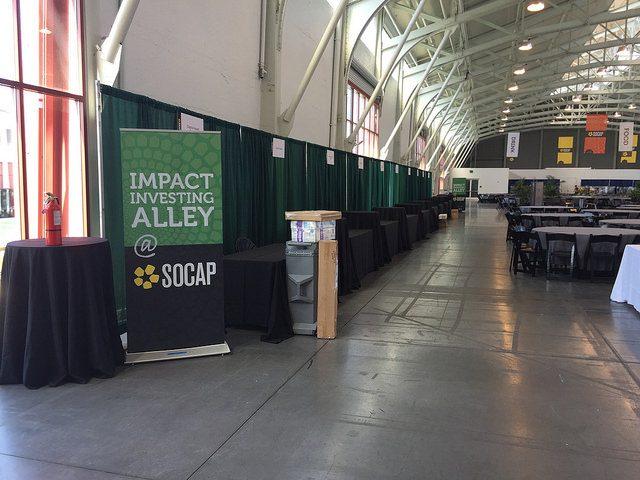

Editor's Note: This is part of our continuing coverage of SOCAP 2015. Read the rest here.
“Money won’t do much good if people and purpose get left behind.” – White Road Investments
Did you know that Patagonia, Seventh Generation and Clif Bar each invest millions in social enterprises through their investment management funds? I didn’t, until SOCAP 2015 this month in San Francisco.
Investment funds for triple-bottom-line impact
At a session entitled Cool Companies with Cool Impact Funds, moderated by Kate Danaher, lending manager for RSF Social Finance, panelists shared frank advice for social entrepreneurs who are seeking funding to expand their business. So, let’s get right to it! What do you need to know if you are seeking funding from one of these organizations?
- $20 Million and Change is Patagonia’s $20 million venture fund, established in 2013. Preferring not to take board seats, the company typically looks for a 2 to 20 percent ownership stake, and seeks out enterprises that inspire and invent solutions to environmental crises. With a focus on food, water, energy and waste, Patagonia has invested in 10 companies to date, including Bureo, a company that turns fishing nets into skateboard decks and sunglasses.
- Seventh Generation Ventures was established last year with a $30 million investment from Al Gore’s Generation Investment Management. The purpose of the fund is to transform commerce to nurture the health of the next seven generations, with a focus on non-food products (like Bobble). Noteworthy: With many entrepreneurs heading for retirement now, Seventh Generation Ventures can represent an exit plan that helps ensure that the company will thrive in the long term, and not simply flip for a high profit by the next owner.
- White Road Investments (Clif Bar) is about five years old, focusing on small, mission-driven companies of about $1 million to $20 million. The company has invested in 13 companies so far, including Public Bikes and the Honest Kitchen. Clif prides itself on its “connective capital,” and likes taking board seats (though that is not required). It prefers companies that do direct-to-consumer sales.
These funds vary in their particulars, but there were three points on which all the panelists agreed: relationships, metrics and mission-alignment all matter. A lot.
It’s all about relationships
Investment decisions for this group have first and foremost to do with personal relationships. Yes, the business has to pencil out, but the numbers take a backseat to who the partners are and what they stand for. Every panelist emphasized this point:
“Transparency and authenticity are everything to us,” said Pete Alberse, general manager of Seventh Generation Ventures. “Before we invest, we need to be in love with the people.”“The cap table is everything,” said Phil Graves, Patagonia’s director of corporate development. “Who are the existing investors? It matters. You can lose your business if you have the wrong partnerships.”
“It’s a relationship-based business,” Kate Danaher of RSF Social Finance agreed. “It takes two-and-half to three years of knowing people before they will lend to you or invest in you.”
“Authenticity is so important to us,” added Gregg Bagni, director of White Road Investments (Clif Bar). “We rely on our ‘gut check’ on people, and we’ll back out if it doesn’t seem right.”
Have metrics for social and environmental performance
Panelists seemed to agree on another point: companies seeking financing don’t need to be B Corporations to qualify for investment – Seventh Generation, RSF Social Finance and Patagonia are all B Corps – but showing that you have at least taken the B Impact Assessment really helps.
In fact, RSF Social Finance asks companies in which it invests to re-take the assessment yearly, to make sure that they are staying on track.
Make sure you are mission- and values-aligned
Each investment fund has a specific focus for its investments, so make sure that what you want to do is squarely aligned with that focus. All agreed that they want to operate in their sweet-spot of expertise and mission. You may have the best social enterprise on the planet, but if its purpose or operating principles run contrary to the investment fund’s mission or values, you are best looking elsewhere.
You can see the video of the full session, interrupted only occasionally by the thundering roar of the Blue Angels practicing over the rooftop during the conference:
https://www.youtube.com/watch?v=pDiHr5OHOwQ
Image credit: B Impact Assessment logo used with permission of B Labs.
Image credit: 1) Flickr/dianaconolly101 2) B Lab
Novo Nordisk CEO Unseats Bezos, Tops HBR 100


Last week, Harvard Business Review (HBR) issued its 2015 list of the world’s top CEOs. The list is an interesting one, especially when compared to last year’s. Some dramatic changes are evident, due in no small part to a shift in methodology.
This year, for the first time, HBR inserted additional criteria on environmental, social and governance (ESG) performance. ESG ratings, in the new system, which were derived from information provided by Sustainalytics, accounted for 20 percent of the overall ranking. That was enough, in some cases, to reshuffle the deck quite a bit.
Of particular note was the fact that Jeff Bezos of Amazon fell spectacularly from the No. 1 spot last year, all the way down to No. 87. Amazon’s financial performance, the sole criteria for last year’s list, was nothing short of phenomenal, making the largely self-made Bezos, with a net worth around $50 billion, a hero to the likes of Forbes. However, the company's performance in the ESG realm, at least as reported for this survey, was considerably less so.
Amazon, which as recently as 2012 was dubbed a “no-show” on sustainability by Marc Gunther, only hired its first sustainability executive just over a year ago. Add to that the rather damning recent New York Times piece on Amazon’s brutal workplace culture, with its copious mentions of ulcers and tears besieging the ranks of its workforce, and you see another aspect of the company that, until recently, nobody seemed to care much about. According to the survey, Bezos ranked No. 828 out of a pool of 907 in the ESG category.
It also bears mention that the evaluation of companies is not only subjective, but can vary widely depending on exactly what criteria are used. This is borne out by the fact that Amazon was just recently rated No. 1 for corporate social responsibility (CSR) by the Reputation Institute.
Another victim of the reordering was Hugh Grant, the CEO of Monsanto, another company that has received both very high and very low rankings in the CSR department. HBR dropped Grant from No. 7 last year to No. 66 (and there are those out there who would add a third six to that number.)
On the brighter side, the No. 1 ranking this year went to a very deserving Lars Rebien Sørensen of Novo Nordisk. The company has consistently been ranked among the top companies for CSR, and received numerous awards, including several top rankings.
In this interview with HBR, you can see a number of rather refreshing aspects of this man, not least of which are his consensus leadership style, the fact that he was one of the lowest paid CEOs on last year’s list, and that he doesn’t use a private jet (despite the company’s $140 billion market cap and $13.3 billion in sales last year) because he feels that doing so would distance him from other employees.
While the company has sometimes been criticized for deriving so much of its revenue from diabetes treatment, not only has it branched out into preventative measures like dealing with the epidemic of obesity, but it's also in the late stages of developing an oral form of insulin, which will be very disruptive to the market.
Susanne Stormer, Novo Nordisk’s VP of sustainability, had the following comment on the HBR announcement and the review's decision to include non-financial metrics.
“We appreciate the intent of the new rating methodology to ‘stimulate debate about the importance of non-financial measures.' For some years now, we’ve seen many examples of how a more holistic business approach pays off in a number of ways – often measured by intangibles such as ‘license to operate,' stakeholder trust, employee engagement, customer satisfaction and brand preference.
"There’s a strong body of academic research that points to social and environmental factors as value drivers. And there are numerous ESG rating methods that seek to identify what factors will differentiate companies’ prospects of future success. So, there is ample documentation for a correlation between financial and non-financial dimensions. Add to that mounting evidence of a causality, which is in effect what the new HBR method appears to subscribe to. Then we’re on to something really interesting.
"Imagine the implications of assessing CEOs by their performance in a 360-degree perspective and over time!”
As for Sørensen, she also had the following to say:
“Lars Rebien Sørensen’s leadership as CEO has taken the company to the next level of performance – setting a clear direction with a strategy focused on leveraging core competencies to improve health for the patients we serve, and inspiring everyone through his personal leadership style, clearly communicating what is right and what is not. He is enormously respected for the way he steers the business and leads people.”
Perhaps what impressed me the most about him was this comment he made to his employees, which he restated in his interview with HBR.
“If we wind up curing diabetes, and it destroys a big part of our business, we can be proud, and you can get a job anywhere. We’ll have worked on the greatest social service of any pharmaceutical company, and that would be a phenomenal thing.”
That might sound naïve, but can you imagine the brand equity that would derive from such an achievement? They could sell anything after that, and people would line up to buy it.
Image courtesy of Novo Nordisk
Policy Points: How Business Can Influence Workplace, Trade and Campaign Financing


Voluntary corporate sustainability initiatives and social enterprises are essential but are not game-changers by themselves. In addition, we need laws and regulations that guide our economy toward sound, long-term decision-making, with full recognition of social and environmental externalities. As business leaders, we can and must support policy changes to help make the economy more sustainable.
A sustainable economy will depend on policies that will help advance change on a societal level. Here are three important policies that can do that:
1. Support paid leave, nationally and locally
Action on paid leave in Congress may be stalled, but just down the street, Washington, D.C.’s local government isn’t waiting. The city council introduced legislation earlier this month to give almost every part-time and full-time employee in the nation’s capitol 16 weeks of paid family leave – the most in the United States – to bond with a new child, recover from an illness or military deployment, or care for a family member. The measure is backed by a majority of the council, and originated with a grant program funded by the U.S. Department of Labor.
What’s at stake: While D.C.’s bill would be the strongest paid leave plan in the country, the city wouldn’t be the first to pass this kind of program; several states have already passed paid leave laws. And while those laws vary, there is no indication at this point that they have been a burden on businesses. In fact, a study of California’s law found that not only had businesses not been hurt, but both they and their employees were also reporting positive effects. That’s because when employees are able to take paid leave, they’re less stressed at work and are able to come back feeling refreshed, both of which are good news for employee efficiency and thus the bottom line.
What you can do: While states and localities continue to move forward on paid leave, action in Congress still represents the best possible option. The United States is the only developed nation without guaranteed paid leave for all workers; that puts us at a competitive disadvantage. Add your business voice in support of national paid leave legislation.
2. Demand sustainable trade deals
In early October, negotiators from 12 Pacific nations, including the United States, announced they had reached a final agreement on the text of the Trans-Pacific Partnership (TPP) trade deal. The deal would include countries with a combined 40 percent of global GDP, and would remove various tariffs on products imported from other member countries. Among other things, concerns have been raised about the secrecy of the negotiations – even many members of Congress were kept in the dark during the process – and its impact on environmental and labor standards in other nations.
Congress now has at least 90 days to review the deal, meaning a vote will not come until January at the earliest. Because of earlier votes to give the president “fast track” authority, the vote will be held with limited debate and no opportunity for amendments to the deal.
What’s at stake: Done right, trade deals like this can be a boon for the American, and global, economy. By raising labor or environmental standards in other countries, we can see strong movement toward a more sustainable economy, while protecting businesses here in the United States that already play by stricter rules. Done wrong, however, trade deals can weaken the American economy, shipping jobs overseas and putting businesses at a competitive disadvantage compared to those in nations with weaker standards.
What you can do: President Barack Obama has said he wants a final TPP to include stronger labor and environmental standards. As Congress begins its review period, it’s crucial that they ensure this deal is implemented in the right way. Tell Congress to make sure this deal raises standards, not lowers them.
3. Call for campaign finance reform
With the 2016 election cycle continuing to heat up, and the first few candidates dropping out, more and more attention is turning to the impact of campaign contributions on candidates. The filing deadline for reports on third-quarter fundraising was Oct. 15, and even before that some candidates announced bringing in tens of millions of dollars in the most recent quarter. However, candidates are also earning the support of Super PACs, which cannot legally coordinate but often manage to skirt that rule. Those organizations have until January to report their fundraising numbers.
What’s at stake: Despite claims that the Citizens United decision – which allowed businesses to spend unlimited amounts on elections – will be a positive thing, many small- and mid-sized businesses do not want to devote resources to campaign contributions, instead focusing on growing their businesses.
Meanwhile, those business interests that do put up lots of cash often do not represent the full range of views of most American business owners. That leads to policy action or inaction that actually hurts the bulk of the business community. And, by raising the appearance of corruption, this spending discourages business people with differing opinions from participating in the process – ultimately making it harder to achieve policy changes that will help the economy grow sustainably.
What you can do: Overturning the Citizens United decision will likely take a constitutional amendment; groups like Move to Amend and Free Speech for People have proposed specific language. Having the business community speak out against the impact of unlimited money will help change the discussion about reforming campaign finance laws. Support a constitutional amendment overturning Citizens United here.
Image credit: Pixabay
Policy Points is produced by the American Sustainable Business Council. The editor is Richard Eidlin, Vice President – Public Policy and Business Engagement.
Dream Big and Achieve More: Lessons From a Nobel Peace Prize Winner
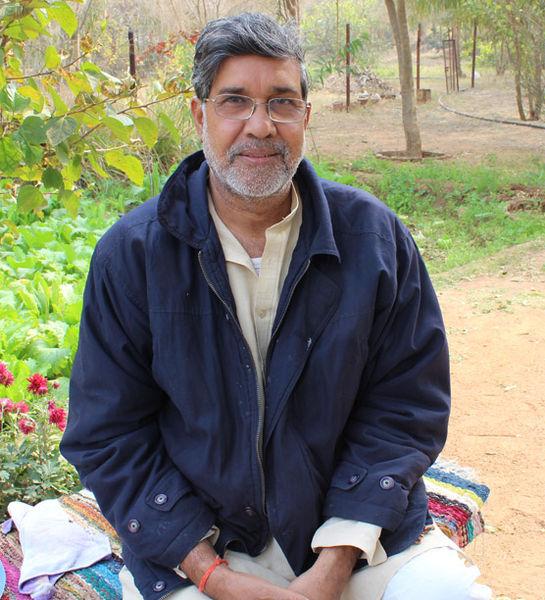

By Luis Gallardo
I’ve known a lot of visionaries in my life, but none have understood how big dreams lead to unbridled achievement like Kailash Satyarthi, co-recipient of the 2014 Nobel Peace Prize.
A Nobel Prize seems like a big accomplishment, but the soft-spoken laureate didn’t let the award go to his head. The tireless advocate returned immediately to his mission to end child slavery. To date, the 61-year-old Indian’s Bachpan Bachao Andolan (Save the Childhood Movement) has rescued more than 80,000 children from bonded labor.
Never have I encountered someone who is so committed to his cause. Even after repeated attacks on his life and multiple murdered colleagues, Satyarthi refuses to back down from his stand against child slavery. It’s a level of dedication that reminds me of Olympic athletes training for decades to perfect their craft.
Satyarthi might not be a businessman by trade, but we business leaders have much to learn from his compassion, dedication and imagination.
From Peace Prize to professionals: Here is what Satyarthi has taught me about working hard and reaching higher:
1. Don’t stop at success; keep dreaming
Although Satyarthi has rescued more than 80,000 children from slavery since the 1980s, he still isn’t satisfied. He outlined an ambitious plan when speaking to the United States Institute of Peace this past June — Satyarthi now wants to mobilize 100 million people to become champions for the 168 million children worldwide who are enslaved in child labor.
How does this apply to business? Look at Google. Google became famous for its search engine — and its leaders probably could have stopped there if they simply sought fame and fortune. But the tech giant has debuted Google Earth, is testing Google Glass, and has created the first self-driving car. How’s that for dreaming bigger?
2. Create the future you want
Satyarthi realized that ending child labor would take strategic planning — not just dangerous forays into illicit factories that employ child slaves. His 360-degree perspective led him to found GoodWeave, which aims to pull the rug out from underneath child labor by offering consumers certified child labor-free carpets while employing skilled adult artisans.
Don’t focus solely on your own business — create an entirely new future in which you want it to operate. Take Muhammad Yunus, another Nobel Peace Prize laureate turned social entrepreneur. Muhammad rethought banking by pioneering microfinance with the social startup Grameen Bank, which offers credit to entrepreneurs in developing countries who are too poor for traditional bank loans.
3. Make it personal
When I listen to Satyarthi speak to leaders, children, or just about anyone interested in his cause, I always notice something — he might be soft-spoken, but he could not be more personally invested in his mission. I’ve heard him tell children, “You’re not the leaders of the future; you’re the leaders of the present.”
Satyarthi’s teachings have showed me that you don’t need to be a CEO to lead in business. It’s easy to feel powerless at a large company of thousands of people or to make excuses for why you can’t do something. But here’s a secret: You have more power than you think you do. It’s about making change where you are now, no matter what role you play at your company.
4. Do the grunt work
Satyarthi doesn’t ask anyone to do anything he wouldn’t do himself. He has led raids himself, and he’s had his shoulders and back broken while trying to rescue children. As an organizer and participant in the Global March Against Child Labor, millions of marchers have followed in Satyarthi’s literal footsteps. The 80,000-kilometer march, which began in 1998, has spanned 103 countries and has drawn praise from leaders around the globe.
Satyarthi never would have attained the following he did if he weren’t willing to get his hands dirty. In business, this is the best way to breed trust with your team. If you show people you’re willing to do any task — no matter how menial or basic — you’ll attract a following of believers.
Reflecting, teaching and learning
Even though Satyarthi’s heart lies with humanitarian work, he taught me one more business secret: Every successful journey must include rest and reflection. Here’s how you can look back on your achievements and enable them to boost you even higher.
When your team has worked hard to reach a goal, it’s time to celebrate. It doesn’t have to be a boisterous, loud celebration — Satyarthi was happy to win the Nobel Prize, but there was no shouting or crying when he learned about it in his unremarkable South Delhi office. No matter how your team celebrates, everyone needs the headspace to reflect, rethink, and look toward bigger goals.
Another good way to gauge your success involves teaching. Before Satyarthi decided to devote his life to ending child labor, he taught eager-eyed students as a professor of engineering in Bhopal. Kailash knows sharing what you’ve learned doesn’t just help others; it allows you to understand your own experiences and goals much more thoroughly.
The flip side of this involves learning. When I travel with Satyarthi, I’m always struck by his boundless curiosity. It’s this spirit that enables him to never be satisfied with his current knowledge or his current success.
In the end, Satyarthi hasn’t just taught me to dream — he’s taught me to always factor others into my dreams. From there, it’s a matter of having the courage and determination to make those dreams happen — Satyarthi had his limbs broken and didn’t quit on his dreams. Take a cue from Satyarthi to shrug off adversity, reach higher, and never forget about the welfare of others.
Image credit: Wikimedia Commons
Luis Gallardo is president of the Brands & Rousers Foundation and founder of the World Happiness Summit. Formerly the CEO of Thinking Heads Americas, Luis works to build on the accomplishments of the World Economic Forum by encouraging workplace happiness, human development, and holistic education. He’s an award-winning author and holds an MBA from IMD in Switzerland and a master’s degree in international relations from the Lancaster University in the U.K.
On SDGs, U.K. B Corps and the Future of Sustainable Business
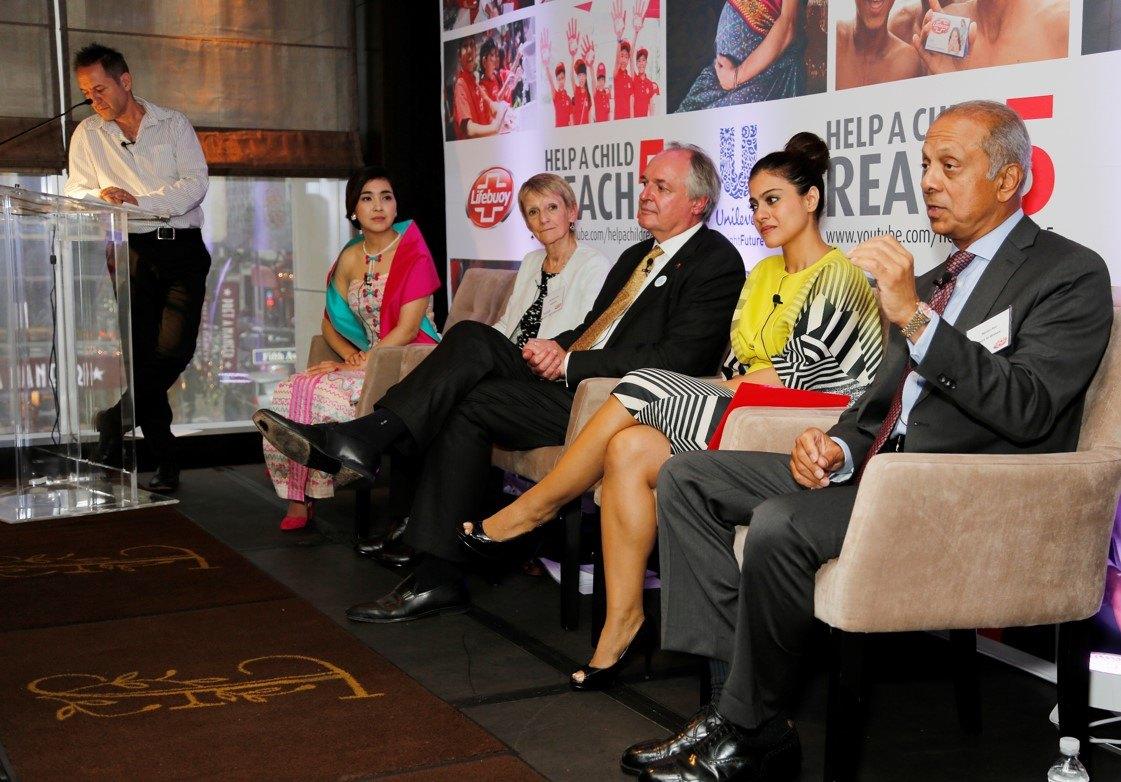

By Andy Last
On Sept. 25, at its General Assembly in New York, the United Nations formally adopted the Sustainable Development Goals (SDGs), the global goals that will set the development agenda until 2030.
The following day these goals formed the center piece of a special concert in Central Park, the Global Citizen Festival, featuring performances from Beyoncé, Coldplay and Ed Sheeran; impassioned speeches from Leonardo DiCaprio, Michelle Obama and Hugh Jackman; appeals for support from everyone from Ban Ki Moon to Big Bird; pledges of money and resources from prime ministers and presidents; and commitments from business leaders.
Being in New York to witness this, it felt an odd mix in some ways. Pop stars and Hollywood A-listers alongside politicians, aid workers and corporates. But in other ways it wasn’t. We do all share the same home, and our needs are interlinked and interdependent like never before. Governments of wealthy nations have a vested interest in governments of developing countries being able to provide safety and hope to their citizens; otherwise what is now a refugee crisis will become the new normal. Businesses benefit from people moving out of poverty and having more money to spend - an aim they share with many NGOs, even if they are coming at the problem from different starting points. Stars attaching themselves to substantive social and environmental issues helps make meaning of their celebrity status to themselves and their audiences.
And environmental issues affect all of us on the planet. The actions of each of us -- individual and community, company and country -- impact the others.
Understanding and communicating these vested interests – as well as the shared goals where they overlap -- increases trust between the different types of organizations and makes effective partnership more likely. Every country and every type of organization represented on the stage in Central Park benefits from ending extreme poverty, fighting inequality and injustice, and combatting climate change, the three overarching aims of the SDGs. The 17 individual SDGs offer guidelines for practical co-operation between different countries and different types of organizations.
SDG No. 2, for example – to end hunger, achieve food security and improved nutrition, and promote sustainable agriculture – provides the blueprint for rich and poor governments, NGOs and food companies, citizens and agrochemical businesses to work together. The common goal gives each group something tangible on which to build partnerships, while acknowledging each other’s separate objectives.
SDG No. 6 – to ensure availability and sustainable management of water and sanitation for all – is the framework within which NGOs and governments, business and celebrities like Matt Damon can work together in common purpose, without being distracted by their differences.
Each of the SDGs requires business to get involved in some shape or form if they are to be achieved. Achieving gender equality needs the active participation of private-sector employers and can be accelerated – or slowed – by mass consumer brands that talk to girls. Providing access to energy needs the enthusiastic involvement of energy businesses. Anyone wanting to make cities sustainable has to work with the construction industry. The list goes on.
And if the world wants businesses to get involved, we have to recognize that they are businesses and that they need to behave as businesses. Good businesses for sure, but businesses all the same, which means making a commercial return on their activities. We all need to recognize that, and businesses need to be comfortable with admitting that, to themselves and to their stakeholders.
There is clearly an increasing transparency in this, driven by the transparency of the Internet, but there are still plenty of voices criticizing businesses for wanting to make money, and plenty of businesses still shy about saying they need to make sustainability commercially sustainable.
The end of September also marked, with a little less fanfare, Salt Communications' accreditation as a B Corp. We are among the first 62 companies announced at the launch of B Corporation in the U.K. and are proud to be in such good company, along with established U.S. B Corporations like Ben & Jerry’s, Etsy and Patagonia. As part of the accreditation process, we had, as all B Corps have, to amend our articles of association to include not only running the business as a going commercial concern, but also to have a material positive impact on society and the environment.
This is our own small reflection of what we saw on-stage in New York – a pointer to a future where commercial, social and environmental are publicly recognized as intrinsically connected and mutually dependent.
Andy Last is CEO and co-founder of salt communications. He leads salt Social Purpose, which helps businesses and brands find the right social mission and communicate it in a way that promotes business growth openly and enthusiastically alongside wider social benefits. Since 2000, salt has worked with organisations including Kimberly-Clark, ManpowerGroup and Unilever, helping create social missions for brands like Andrex, Knorr, Domestos and Lifebuoy.
Forum calls for greater leadership for sustainable beauty industry


Sustainability non-profit, Forum for the Future, has invited members of the beauty and personal care industry to become part of a new leadership group that will steer the sector toward producing better and more sustainable products for consumers.
This follows a year of intensive work by the Forum, supported by major retailers Target and Walmart, in an industry-wide Beauty and Personal Care Products Sustainability project.
Bringing together stakeholders across the entire value chain – from ingredient manufacturers and scientists to consumer brands and retailers – it aimed to diagnose the challenges and opportunities in the beauty and personal care industry and decide on measures to deliver more sustainable products on shelves.
Shawn Townzen, vp, Personal Care for Walmart said: “Walmart is pleased to support this initiative that brings together members of the beauty and personal care industry to lead the sector toward permanent and positive change. We appreciate Forum’s innovative work to change the system and invite suppliers and other retailers to join in this collaborative effort to put products on shelves that are both affordable and sustainable.”
Forum for the Future has also published a new think piece report, Driving the Big Shift to Sustainability, which shares insights from the process of bringing diverse stakeholders together to achieve widespread change.
The think piece outlines the steps taken throughout the in-depth system diagnosis process and the gaps and opportunities uncovered. These include the need to improve access to information across the supply chain, the lack of shared criteria to evaluate the sustainability of products, and the need to stimulate more innovation in key areas such as the development of new preservatives.
Click here to get involved.